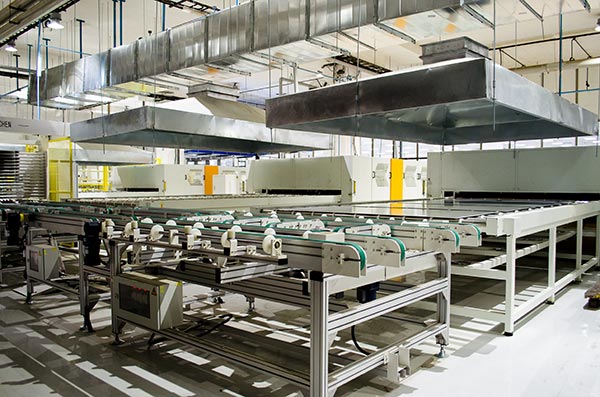Government support for backward integration and sustained innovation is crucial for Indian module manufacturers to compete against Chinese counterparts, says a new report by the Institute for Energy Economics and Financial Analysis (IEEFA) and JMK Research.
The report, ‘Viability Assessment of New Domestic Solar Module Manufacturing Units,’ says that as the government looks to promote Make in India, it needs to take a balanced approach that extends beyond boosting the domestic sales through the imposition of safeguard duties and basic custom duties.
The report notes high bill-of-materials costs, limited-scale manufacturing capacity, and capacity under-utilization (due to fluctuating demand for domestic modules), among other factors, lead to increased manufacturing costs and thus high module price for Indian players.
India has a 10 GW annual domestic demand for solar installations, but the industry relies heavily on imported modules from China. The share of domestic modules in total utility-scale PV installations annually is only around 35% despite the nation having an installed domestic PV module manufacturing capacity of about 15 GW.
“We found capacity utilization rates of solar module domestic production facilities in India running at only 40-45% and estimated operational capacity of only about 7 GW, despite having an installed domestic PV module manufacturing capacity of about 15 GW,” said report author and Ieefa analyst Vibhuti Garg.
“Clearly, India has the capacity to do much better,” Garg added.
“A self-reliant solar sector would not only cater to domestic demand but would also open new avenues of exports, especially after the Covid-19 supply chain shock that has forced numerous countries to look elsewhere for alternatives to China’s goods,” said Garg.
India Vs China
China is outperforming India in many areas, in both manufacturing and research and development, and thus offers high-efficiency yet cost-effective modules.
While Indian manufacturers have to import many raw material inputs, Chinese players rely on their end-to-end domestic PV value chain. Free land parcels allotted by various state provinces, financing at negligible interest rates, and cheaper electricity at very subsidized rates are the other benefits available to China’s PV manufacturing facilities that lead to lower costs.
“Chinese players utilize between 1-3% of gross revenue for solar module R&D every year,” said JMK analyst and report co-author Jyoti Gulia. “In contrast, India’s leading players provide little R&D investment.”
The report finds that in terms of profit margins, Chinese module suppliers are able to absorb larger shares of profit (on average 4.3%) from operational revenues than Indian suppliers who earn an average profit income of less than 3%.
“This is because the Chinese module manufacturers have larger-scale production facilities and low dependence on imports. China also has completely integrated facilities producing modules, cells and wafers complemented by robust R&D and favourable government support,” said Garg.
In terms of technology adoption trends, China’s mono-Si PV modules reached two-thirds of the share of the entire global PV production chain in 2019 by gigawatt volume.
“When we compared that to the top 7 Indian domestic module manufacturers in 2019, mono-Si PV modules constituted only 13% of PV production, while 87% comprised of multi-crystalline (or multi-Si) PV modules,” said Gulia.
“Keeping abreast of technological innovations in the current energy transition towards renewables must be the highest priority.”
This content is protected by copyright and may not be reused. If you want to cooperate with us and would like to reuse some of our content, please contact: editors@pv-magazine.com.









A very analytical report describing the factual position about solar modules manufacturing in India vis-a-vis abroad especially China. The fact of the matter is non-competitive domestic production due the factors elaborated nicely in the report. Another important factor could be the large volume production in China by a number of companies with huge manufacturing capacities.
With almost nil raw materials base in India and modules manufacturers having no integrated supply chain productions, the competition becomes very tough. Govt can play a major role if it is determined to establish a major hub for the solar components production in India , parallel to China. The incentives to manufacturers could be on the lines enumerated in the report, as in China.
India needs to get out of its backyard puddle, and as a nation of 1.3 Billion people, grow up and get into the vast Ocean Size needs of Solar Energy for a nation that can count almost 20% of Mankind living and using Energy within its borders today.
India requires at least 500 GW/yr of Ingot-Cell-PV Panel Manufacturing Capability to achieve Zero Pollution by 2050…. yes 100No. such 5GW Plants busy for the next 30 years and beyond, to replace the 30 year old Panels in the future annually.
15GW/yr is way off the mark and will result in a “Ambassador Car Only” 5,000Cars/day today) …. and the rest is history.
Until India’s communist mindset and Indian communist courts get out of the way, India won’t develop at a fast pace. Foreign funded ngos and activists for hire have damaged India for 70 years, yet Indian government and courts sleep